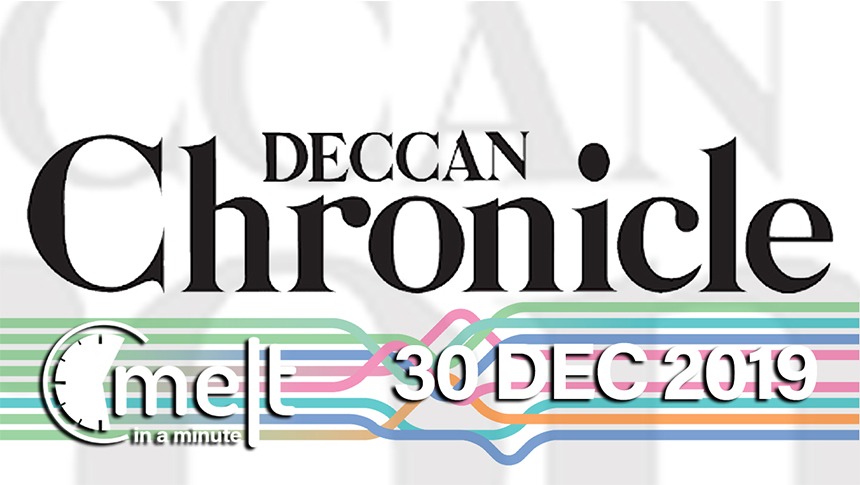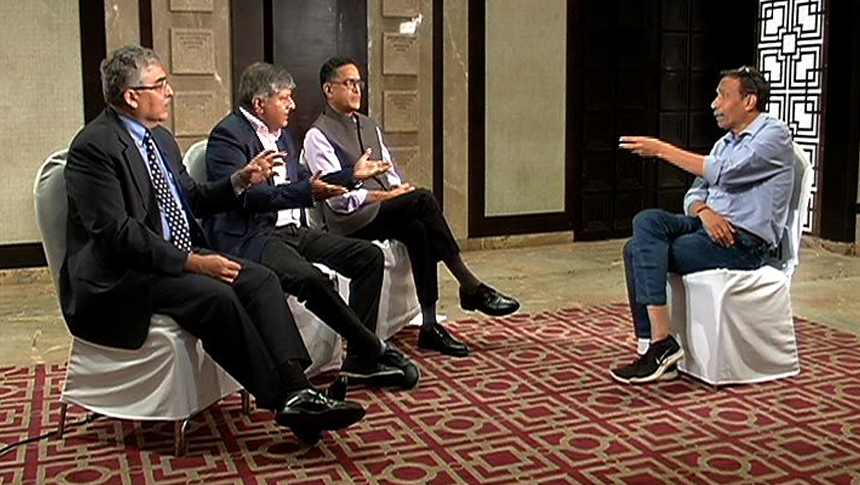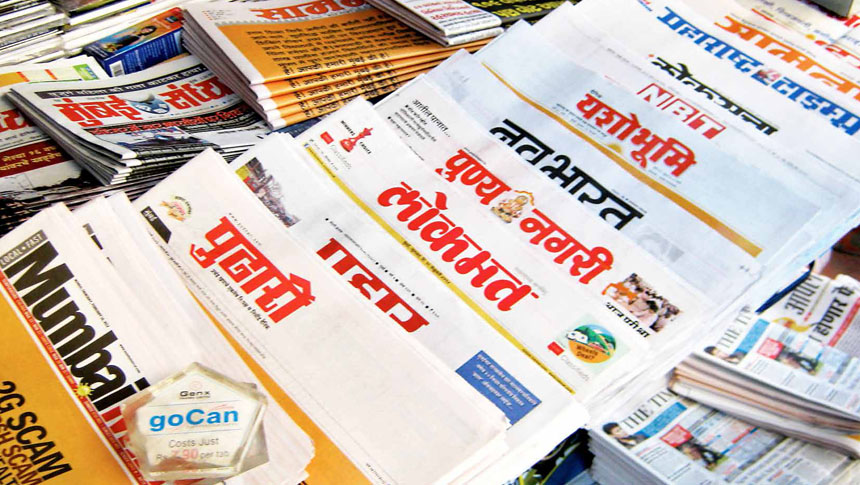During the last few weeks, I’ve read a few pieces in media on the challenges faced by TV channels and newspapers, especially in the context of the ‘glut’ of inventory, and, consequently, low yields.
There is no greater myth than the glut in inventory. There are hundreds of TV channels and thousands of newspapers, that is a fact. There is, therefore, seemingly endless inventory chasing clients.
However, most of these data-driven (God, how I hate that phrase) articles and studies focus on the quant side, ignoring the qual side. It’s this lazy interpretation of data that allows the buyer to keep hammering away at the ‘glut’.
Often, I turn to ‘anecdotal’ or ‘experiential’ data. How, when there is a glut, do we see as many as TWENTY full page ads in Times of India, even as other newspapers, on the same day, struggle to sell even one? Why did advertisers pay a premium for space in ToI when they could have advertised in other newspapers in the same geography at a fraction of the price?
It’s the same on TV. Why are some channels full on inventory while other channels struggle to sell a single spot?
It’s when one goes deeper into the data that the glut myth is busted. This is a long post, so please bear with me. The length is required.
I’ve focused on the TV business, but, without a doubt, the principle of the argument holds true for newspapers, radio, outdoor – and the Internet as well.
The (India) Background
By the middle 90s, TV, thanks to the advent of satellite television, was booming.
Thanks to the unstoppable economic reforms initiated by the PV Narasimha Rao government, the economy was truly flourishing. New brands were launched in almost every category – and older, previously monopolistic brands now had competition.
The Indian economy was growing at a steady clip; Real GDP growth averaged 5.7 percent per annum in the 1990s, leading to increased consumer demand with more disposable income in the pockets of Indians, especially the middle class.
If the consumer demand had grown, so had the ability to target consumers, with both national and vernacular satellite television providing additional reach at efficient prices.
However, the new complexities in the media landscape caused by the growth in the number of media outlets made media planning and buying a far more complicated exercise than was the case earlier, giving rise to the birth of the specialist media agency.
Unilever was one of the first to recognize the impending complexity, deciding to collate all their media buying into one ‘buying solution’. Fulcrum was born for the express purpose of catering to the planning and buying requirements of Unilever.
Earlier, Unilever media duties were assigned to the various agencies that handled the creative duties. In India, therefore, Unilever media planning and buying was earlier divided between JWT, Lowe and Ogilvy. Suddenly, these three were combined into one under Fulcrum, giving the media agency immediate volume clout.
Unilever is but one example. Various companies that had assigned multiple brand communication duties to multiple agencies took a cue from the Unilever example and consolidated their media planning and buying duties under one umbrella, even as they continued to split the creative duties.
This gave rise to the proliferation of media agencies – and the media independent.
Now, there was no longer a need for a connection between the creative agency and the media agency (for example, in the Unilever case, Fulcrum had the three creative agencies, JWT, Lowe and Ogilvy, as partners). The media agency business was an independent business, and brands started signing them on for better planning and buying resources.
Slowly, but surely, the larger media agencies, backed by volumes, used their volumes to negotiate harder and harder with media outlets, and price became the deal-breaker in almost all agency appointment decisions.
This gave rise to the inexorable: The larger media agencies were winning more and more accounts, acquiring greater and greater volumes, resulting in enormous buying clout.
What were the implications?
- With the majority of large advertisers assigning duties with media agencies, the need by media salesmen to visit and sell to the creative agencies virtually ended.
- With each media agency handling an increasing number of brands, the building of, and maintenance of, relationships with key personnel at media agencies became paramount.
- Interaction with brand managers decreased, as the ‘power’ to decide on media plans now rested largely with media agencies
- Media agencies started leveraging their volume clout
- Sales efforts for media outlets seemed to become more efficient, with the number of sales meetings reducing considerably, limited, largely, to meetings with media agencies
- Business to channels and publications from a handful of media agencies accounted for the lion’s share of total advertising revenue
The Winners And The Losers
It seemed like all the players in the eco-system were winning
- Clients benefited from lower rates thanks to the buying clout of media agencies
- Media agencies, thanks to their turnover, made healthy profits despite low margins
- It seemed that channels and publications gained from greater efficiency and focus in their sales efforts.
- However, greater clout in the hands of the media agency implied that the balance of power in negotiations between agency and media outlets lay with the agency.
The Birth Of Centralized Trading
As media agencies grew in size, so did their buying volumes. To bring in buying efficiency, all agencies created a centralized trading department. Now specialist planners would decide on the targeting required by various brands for various campaigns, they would no longer have the power to decide on specific media outlets. Their remit would end when they defined the number of GRPs needed by SEC/Geography.
The centralized trading department would consolidate all requirements and now proceed to assess the suitability of each media outlet to deliver these requirements.
Media outlets continued to be pleased with the situation, as their sales efficiency continued to improve.
Media agencies began entering into volume contracts with media outlets. In some cases, these were client by client AND an overall volume commitment.
In turn, media outlets were to pay incentives for growth in overall volumes and, in some cases, growth of business from specific clients
The conflict of interest – the reality
- The main reason for winning and retaining business as far as the media agency is concerned is buying efficiency.
- The lower the media rates that the agency negotiated, the greater the chances of winning and retaining accounts
- As a result, the win-win-win equation came a cropper; the client was clearly the greatest beneficiary and the media agency the next winner, thanks to incentives ‘earned’ from media outlets for volume business
- Media outlets may have seen their volumes grow, but at the cost of lower rates
The above scenario underlines the reality: there is no belief that media agencies will ever be an active supporter of higher media rates, because that will cause their core ‘promise’ – lower rates – to be threatened.
Where Does The Media Buying Power Come From?
The essence of the supposed power of the buyer comes from a myth: that of oversupply of inventory. Buyers repeatedly quote the ‘800 channel’ figure to underline the glut of inventory. The same is true of print.
The Myth Of The Glut
An analysis that I did a few months with BARC data highlights the myth. While there may indeed be 800 channels that beam into Indian households, the top 50 channels deliver an astonishingly disproportionate 64 percent of the total GRPs generated by 800 channels.
What Does The Busting Of This Myth Mean?
Fundamentally, it means that media agencies cannot back their threat of taking their business elsewhere with action. No large brand can afford to be off Zee TV or STAR TV – simply because it is absolutely inefficient (in some cases impossible) to buy similar numbers of GRPs elsewhere in anywhere near an efficient manner.
What Does This Imply?
The buying-selling power equation that we see currently, that the buyer is more powerful than the seller, is rubbish. This state can exist only where there are more sellers (or inventory) than the market can bear. This is simply not the case. It is the inventory that is in short supply – and the buyer SHOULD be the weaker in the buying-selling equation by the fundamental rules of economics.
How Have We Reached This Stage?
- The buyer has no reason whatsoever of disturbing the status quo where rates were kept in check
- The media agency business was growing, thanks to the incentives that they received from media outlets, thanks, in turn, to the perceived power of the buying volumes
- Media outlets mistakenly focused on the volume growth rather than focus on the dangers of long-term low rates and the resultant stunting of the business
I don’t get it. Why don’t media sales teams understand where they stand – and hold their ground and push their rates up?
It is the job of the buyer to bring prices down. In the case of media, buyers, over a period of time, have made media inventory a commodity and forced low rates.
It is the job of the seller to raise prices – and underline that the media product he or she represents is NOT a commodity, but a valued product in short supply.
It is a difficult time in traditional media as we go through tectonic shifts in media consumption, inexorably marching to continuously increased consumption digitally. As a consequence, yields in traditional media will be crucial to media outlets – and a change in viewpoint, allowing them to view themselves as premium products rather than commodities, is all the more important.



